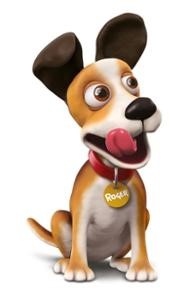A Look at Some of Most Loved Jingles and Sound marks on the Australian Trade Marks Register
In 1974, McDonald’s, also fondly known in Australian slang as “Macca’s”, engaged an advertising agency to assist with creating an ad campaign to promote its BIG MAC burger which led to the creation of the jingle ‘two all-beef patties, special sauce, lettuce, cheese, pickles, onions, on a sesame seed bun’. The original commercial that aired in 1974 included imagery of the BIG MAC, a child attempting to learn the jingle, and voiceovers of the jingle.
Recently, Macca’s launched a new commercial to promote its BIG MAC and took inspiration from its 1974 commercial in that it focused on different generations either recalling or learning the jingle which captures the ingredients of a BIG MAC. This commercial gave the impression that our older generation could recall the BIG MAC jingle due to their exposure to the previous commercials. From our own experience in viewing this commercial, the impression depicted is accurate and it is very possible in years to come that our now young generation will have the same recollection.
Whilst Macca’s do not hold a sound trade mark registration for its BIG MAC jingle, it does hold an Australian trade mark sound registration (Registration No. 1019361) for its musical jingle, best sung as ‘BA DA BA BA BA’, that is sometimes accompanied by the words ‘I’m lovin’ it’. It could be said that these jingles have become so synonymous with Macca’s, that when consumers hear the jingles, they automatically identify Macca’s as the trade source of the goods and/or services.
If we dive into the Australian Trade Marks Register, there are a range of companies that have registered sound trade marks and use the same to promote and/or advertise their goods and/or services to consumers via their auditory senses instead of visually. Some of these registrations include:
-
O’Brien Glass Industries Ltd’s jingle ‘O, O, O, O’BRIEN’ used in its commercials to promote and advertise its glass and door goods and services (Registration No. 1051140)
-
Toyota Motor Corporation Australia Limited’s musical score that is occasionally accompanied by the words ‘Oh What A Feeling, Toyota’ to promote and advertise Toyota motor vehicles (Registration No. 1110068)
-
Mars Australia Pty Ltd’s jingle ‘DOGS GO WACKO DOGS GO WACKO FOR SCHMACKOS’ used to promote and advertise its animal foodstuffs, and in many instances is used in commercials in conjunction with the dog ‘Roger’ who has his bathtime in order to receive a ‘Schmacko’ – Roger, as shown below, is also a registered figurative trade mark owned by Mars Australia Pty Ltd (Registration No. 1992814)
-
Twentieth Century Fox Film Corporation’s musical score that is used at the beginning of every film produced by the company (Registration No. 1768692) and
-
Netflix, Inc.’s ‘Tu-dum’ sound used at the start of a series or film streamed on its streaming service (Registration No. 1799947).
It can easily be said that each of the above registered sounds marks are clearly capable of distinguishing the owner’s goods and/or services from those of other traders as the sounds are not commonplace or functional sounds in respect of the goods and/or services covered. In this respect, it it isimportant to note that registering a sound mark can be more complex than registering a standard word or logo mark, as you’ll need to demonstrate that the sound is capable of distinguishing the trade source of the goods and/or services.
Whilst the trade mark procedure of a sound trade mark application is the same as any standard application, you will need to provide additional information in order to meet the filing requirements of a sound trade mark application, being:
-
a graphical representation of the sound mark which can be a verbal description of the sound or a musical notation;
-
a recording of the sound trade mark; and
-
a clear and concise description of the sound trade mark, which will be entered as an endorsement.
Currently, there have only been 166 applications to register a sound mark in Australia, the first filed in January 1996. However, in a world where…
-
we are constantly on our devices
-
we need to watch a video to access a news video or to continue playing a game
-
goods and/or services are becoming more available online
-
we are watching series or films via streaming services
…could we see an increase in sound trade marks filings with traders looking to use auditory cues, with or without visual representations, to make consumers aware their brands and the goods and/or services offered by those brands?
After all, psychology tells us that sounds and music help us to recall memories or make new ones, so why cannot the same apply to the use of sounds marks to inform a consumer’s recollection of a brand and goods and/or services associated with that brand.
If you are using a jingle, sound or musical score to promote and advertise your goods and services, you may wish to consider whether or not the same can be protected by way of a sound trade mark registration to bolster your IP armoury.


